Police berating boy, 5, spotlights abuse and neglect of Black children
OPINION: Montgomery County officers Dionne Holliday and Kevin Christmon repeatedly yelled at the Black child, threatened him, mocked his cries and called him a 'beast'
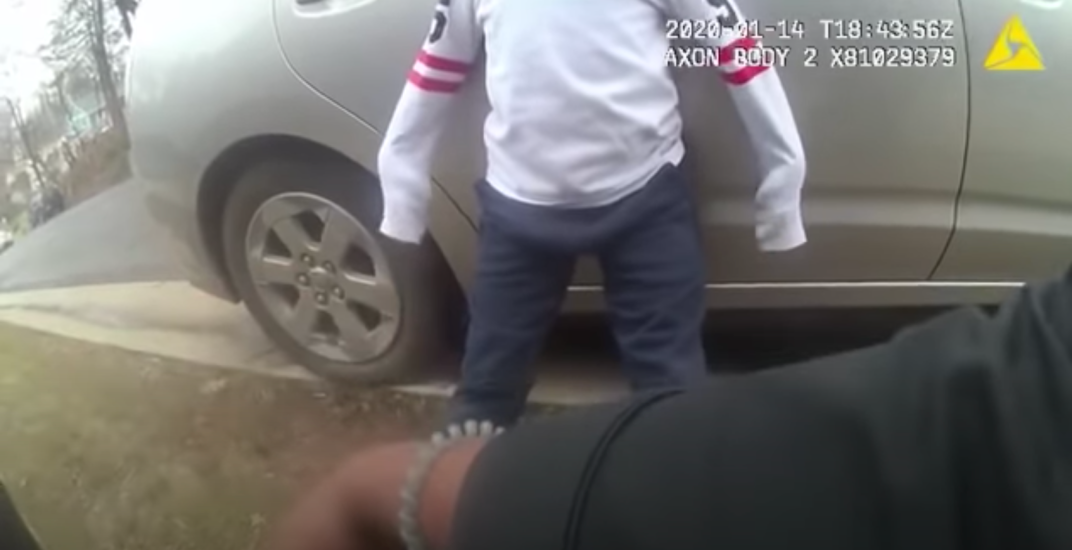
A pair of Montgomery County police officers believe that Black children who get into trouble at school aren’t being whupped enough. But the truth is that all that whupping is a big part of the underlying problem.
“We want you to beat him,” Officer Dionne Holliday told the stressed-out mother of a 5-year-old Black boy having a meltdown at the East Silver Spring Elementary School in Silver Bring, Maryland. “Don’t use a weapon … but you can smack that butt repeatedly,” she added.
Read More: Maryland police release video of 5-year-old placed in handcuffs at school
Holliday offered this advice after she and another officer, Kevin Christmon, repeatedly yelled at the boy, threatened him, mocked his cries by screaming inches from his face, called him a “beast” and said he needed to be placed in a crate.
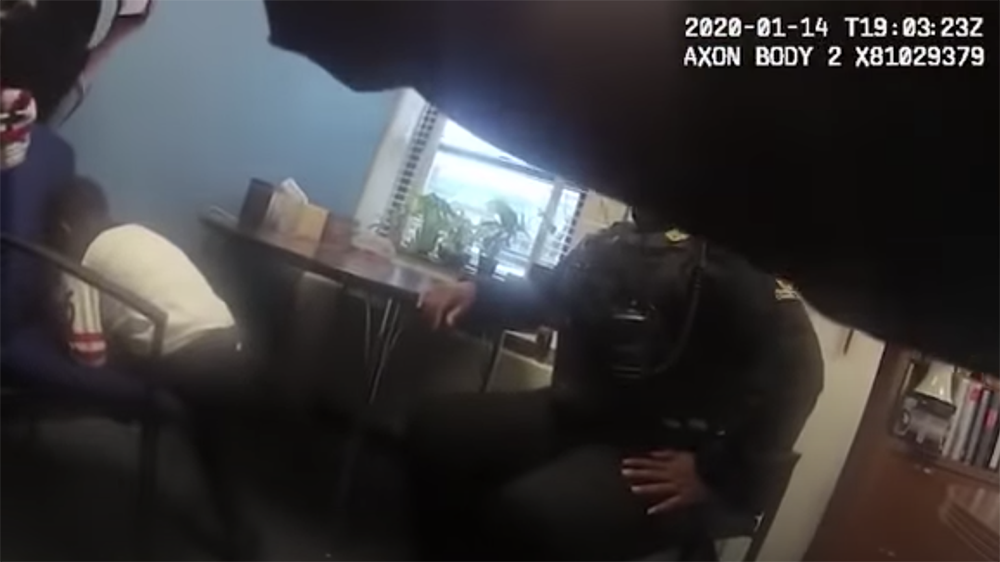
A new bodycam video released Friday by the police department shows the two officers, who are Black, repeatedly telling the boy how bad he is. The interaction took place back in January 2020 when he allegedly broke a computer and attacked a teacher and another student before running out of the building where police caught up with him a block away.
The video does not provide a backstory behind what prompted the child’s behavior.
While the boy continues to cry, cough, and hyperventilate, the officers can be seen making slapping gestures and joking about how he would not be able to sit in his chair if they were able to beat him. They also laugh as they exchange childhood stories about how much they were beaten, first at school, and then again at home by parents and grandparents. The white school staff can be seen on the video standing in silence during the banter and it is unclear if any of those female staff were counselors.
When the boy’s 41-year-old mother arrives, she finds him hunched over a chair cradling his head. Her first response is not to kneel down to his eye level to console and comfort him or to ask him what happened. Instead, she orders him to stand up, removes his shirt, and shows the officers and school staff that the child’s bare chest and back to prove he has no signs of physical abuse on his body.
Read More: Florida teacher denies slave abuse, defends use of N-word in viral video
“I spank him. But I can’t discipline him the way I want to because the government won’t allow you,” the mother said to the officers and school staff members. “I’m not losing my child to the system and I’m not going to prison.”
Officer Holliday assures the boy’s mom that she won’t go to jail for spanking her son on the butt. A few minutes later, as Holliday slides a pair of handcuffs off the terrified boy, she told him, “I don’t like bad children, disrespectful children. I think they need to be beaten, and that’s what I told your momma. I hope she does beat you when you go home because you deserve it so much for your actions today. You were horrible.”
These were Montgomery County police officers, not in-school resource officers. Imagine if this had been white police officers talking to a 5-year-old Black boy as they did. Would we be processing this situation any differently? How would those same Black officers have responded to an agitated white 5-year-old boy having a bad day at school? Sadly, we always have to ask ourselves these questions and consider all of the racial dynamics in every situation.
The boy’s mother, Shanta Grant, has since filed a lawsuit against the Montgomery County Public School system and the officers involved in the incident. The police department lodged an internal investigation and both officers are still employed.
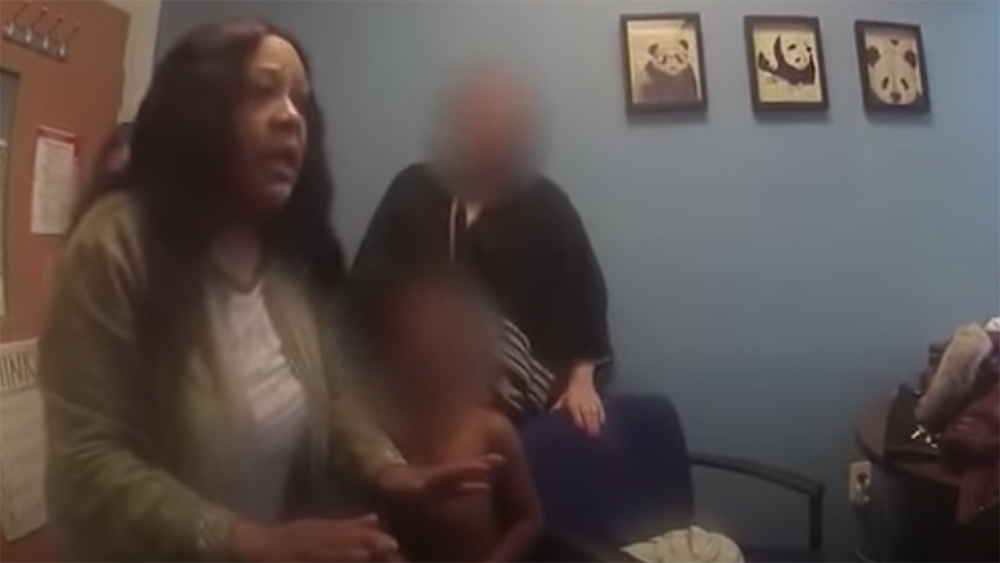
In a statement, the Montgomery County school system said, “There is no excuse for adults to ever speak to or threaten a child in this way. As parents and grandparents, we know that when families send their children to school, they expect that the staff will care for them, keep them safe and use appropriate intervention processes when needed.”
Where were these sentiments when the 5-year-old boy was being berated, insulted and verbally assaulted by police while school employees stood by?
This particular 5-year-old boy’s experience and the responses of the adults on the scene that January day illustrate how Black children are often viewed, talked to and disciplined by authority figures. It also spotlights the no-win conundrum that Black parents and children face in trying to avoid harm at the hands of these authority figures in the name of “disciplinary action.”
Read More: Grinch scaring Black children for fun and photo ops is actually traumatizing
While we don’t know the exact details behind that 5-year-old boy’s behavior that day, one thing is certain: he was very upset and in emotional turmoil. Then his turmoil is compounded when he encounters a Black male cop who immediately yells at him, tells him to “shut up,” that nobody wants to hear his cries.
Not one adult in this situation bends down to his level to talk with him or comfort him. Nobody asks him what happened, how he is feeling, or why. What message does this send to the boy? That nobody cares and nobody will listen to him. Nobody is concerned about his feelings, or his well-being. Everyone thinks he’s bad. Rather than being seen as a small child who is having a problem, all of the adults view him as being the problem.
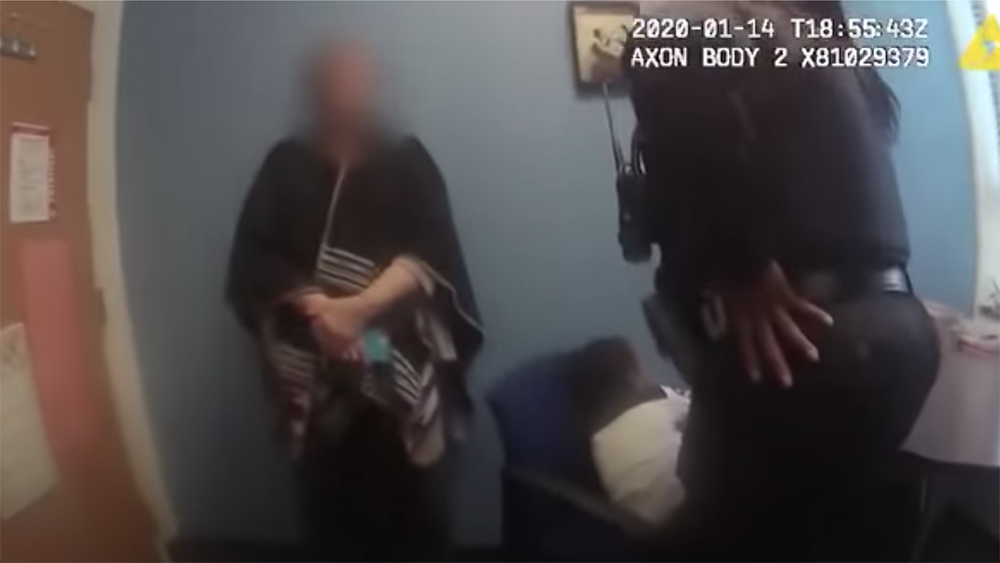
His own mother doesn’t even show him empathy. She repeatedly tells the cops that he’s “spoiled.” Nobody offers any understanding or a reassuring word. Nobody recognizes or affirms his humanity. Nobody gives him a gentle touch. One of the officers tells him, “this ain’t your world” — as if Black children don’t already receive that message from society. If he didn’t know it already, that day a 5-year-old Black boy learned that the adults in his world consider him a budding monster, less than human who, instead of being cared for, must be contained and controlled like an animal.
This is a horrifying and nauseating example of the demonization of Black boys as monsters in America. The process begins early. Far too many Black children are already programmed by adults in their lives to lash out at other people. When they do this, something has happened at home, at school, or in the community that leads to this behavior. But none of the adults in this boy’s situation wanted to address the root cause of his problematic behavior.
Children don’t lash out without reason. Sometimes that reason stems from the fact that they haven’t yet learned tools for managing their feelings and responses. Often their chronological brain development has not yet reached that level. Other times the reasons are rooted in family dynamics around discipline and punishment. This boy’s mother already admitted to spanking him.
Read More: Black children six times more likely to be fatally shot by police: study
There is plenty of scientific research which shows that spanking children causes their brains to be altered, harms their ability to regulate their emotions, and places children at risk for aggressive behaviors and deviance. The spanking to keep him out of trouble at the hands of authorities proves to be counterintuitive, and likely what contributed to his problematic behavior at school.

Black American parenting culture, which grows out of the nonstop trauma of struggling to survive centuries of enslavement followed by Jim Crow terrorism and state violence, can inadvertently pave the way for Black children to be dehumanized and treated harshly by adults in authority, including some Black adults.
We’ve seen outrage over police abuse of Black children. But a less visible yet more pernicious form of racist violence against children is exercised by Black cops, teachers, and parents who often serve as proxies for the intergenerational reproduction of a white supremacist racial order, which hinges vitally on the normalization and naturalization of emotional and physical violence against children.
Many Black parents are more inclined to take the word of teachers about their children’s misbehaviors than they are to listen to, consider, and believe their own children. America’s teachers are overwhelmingly white (80%) and majority female, disconnected from the cultures of the children they’re teaching, and full of fears and biases against Black and Brown people. And it is white women who especially have driven the school-to-prison pipeline.
We read countless headlines of teachers abusing Black children and subjecting them to abuse and microaggressions in the classroom. We’ve seen teachers, school resource officers, and cops punch students, cut students’ hair, slap them in the head, call them the n-word, walk on their backs during a lesson about slavery, threaten them with lynching for not focusing on schoolwork and yank and pull a preschooler by the hair for being sick or sleepy.
Videos of security officers body-slamming students, grabbing and punching them or throwing a girl across a classroom have gone viral in recent years. At a Chicago elementary school, a 9-year-old Black boy was beaten with belts in a bathroom by a teacher and her best friend.
Given all of the evidence about the Black-white academic achievement gap and racial disparities in school suspensions, expulsions, paddling, and arrests, you would think that more Black parents would listen to their children first. Or that they would realize that beating their kids at home often contributes to in-school behavior issues and can be the first step into the school-to-prison pipeline.
The last thing any police officer should be telling parents, especially Black parents, is to hit their children. What they’re actually doing is encouraging assault and battery and potentially becoming accomplices to child abuse. The police’s job is to protect and serve, not to encourage domestic violence within families, in any form.
Can you imagine a cop telling a man that his girlfriend or wife is a “beast,” and that he should beat her and put her into a crate?
Black children in racist America grow up wedged between the proverbial rock and a hard place because many Black parents invoke their fear of their children being harassed, arrested, beaten or killed by police to justify whupping their children. Corporal punishment of Black children is widely considered a necessary step in protecting them from police violence.
One of the cops in this incident proclaims that children are not whupped enough. But based on what evidence?
All the major surveys on attitudes about corporal punishment consistently show that the majority of parents across race and ethnicity, with the exception of Asians, embrace corporal punishment. It is codified in law in every state that corporal punishment is legal, and 19 states still allow paddling in public schools. Paddling in private and charter schools is allowed in every state except New Jersey and Iowa. Over 200,000 schoolchildren are paddled each year, and a disproportionate number of them are Black children.
Annual reports from the Children’s Bureau also show that Black children experience higher rates of maltreatment and fatalities at the hands of parents than other groups of children. If you talk to social workers and district attorneys, they’ll tell you that many Black parents who are arrested for child abuse will often say they didn’t mean to harm their children, or they were trying to be a responsible mother or father protecting their child from future harm by police.
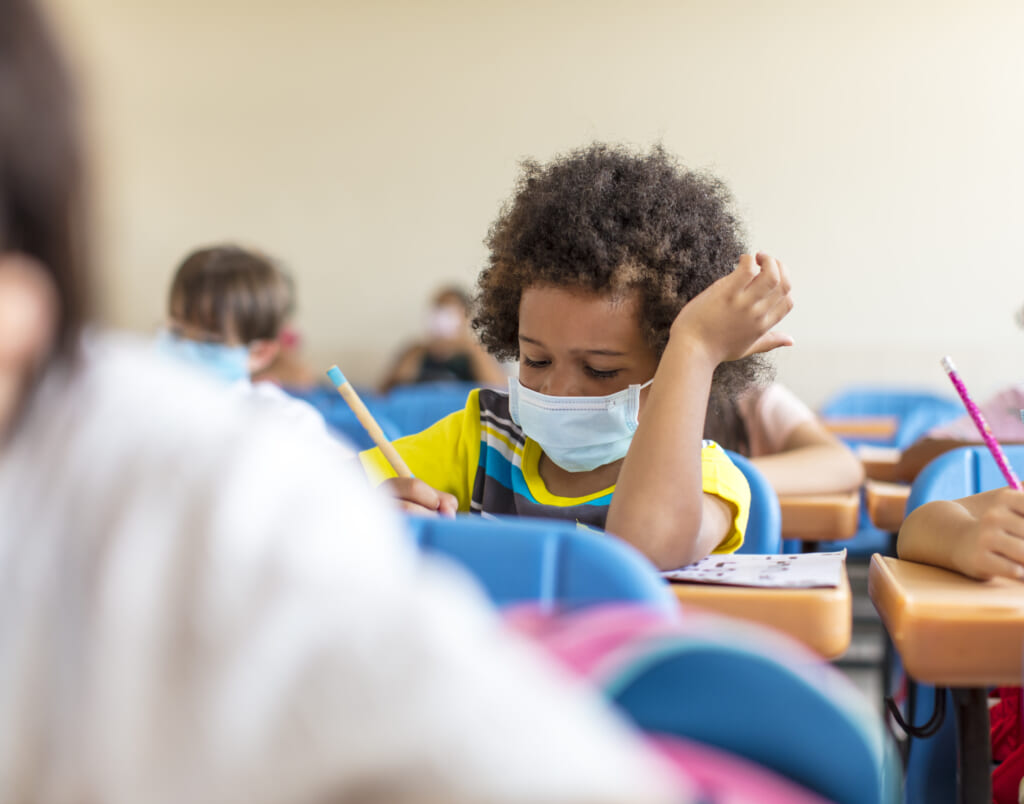
Between 2012 and 2018, 41 Black youth were killed by police, according to the Washington Post’s Fatal Force database of police shootings. During that same time period, 2,389 Black children were killed as a result of maltreatment at the hands of their parents. And these child abuse statistics only represent a small minority of the actual abuse because most go unreported.
The idea that children are not being whupped is a lie. The truth is that all that whupping is a big part of the underlying problem. These kids are bullied at home in the earliest years of childhood and then folks are surprised when their children act out by reflecting what they’ve been taught at home.
Their behavior is met with more coercion, physical and emotional violence at school, which is yet another zone of intimidation. Layer on problematic police intervention, messaging and behavior, and you see the odds that Black children are up against.
In a time when discussions around police funding are politically charged, we need to look at whether we need cops in schools. Research shows that, rather than helping to prevent or adequately address violence, many of these so-called school resource officers are physically harming the children they’re charged to protect. As a result of law enforcement presence, grades are dropping, and delinquencies are on the rise.
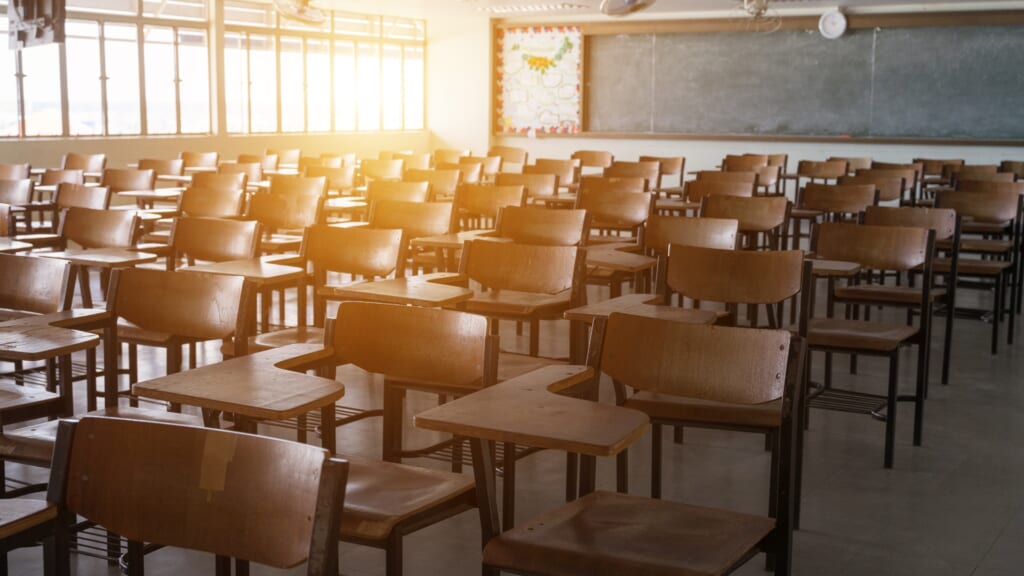
A study by the National Institute of Justice found that in the schools that increased security resource officer (SRO) staffing — which are disproportionately assigned to Black and Brown schools — there were thousands of children being marked for life with criminal records for behaviors that previously would only have resulted in minor in-school discipline. The results also include higher suspensions, students being injured more by cops than in fights with other youth, lower grades, delinquency and students not showing up to school.
This Montgomery County incident shows how Black police officers and parents contribute to a form of abuse against Black children that can be even more pernicious than white police brutality because it leaves the children no place to turn for help, support or understanding.
Few Black children are allowed to express their emotions at their age level without retaliation from adults in authority. Too many Black children are being programmed to expect violent words, attitudes and treatment. To understand at an early age that their humanity is eclipsed by their race, even in the eyes of those who look like them.
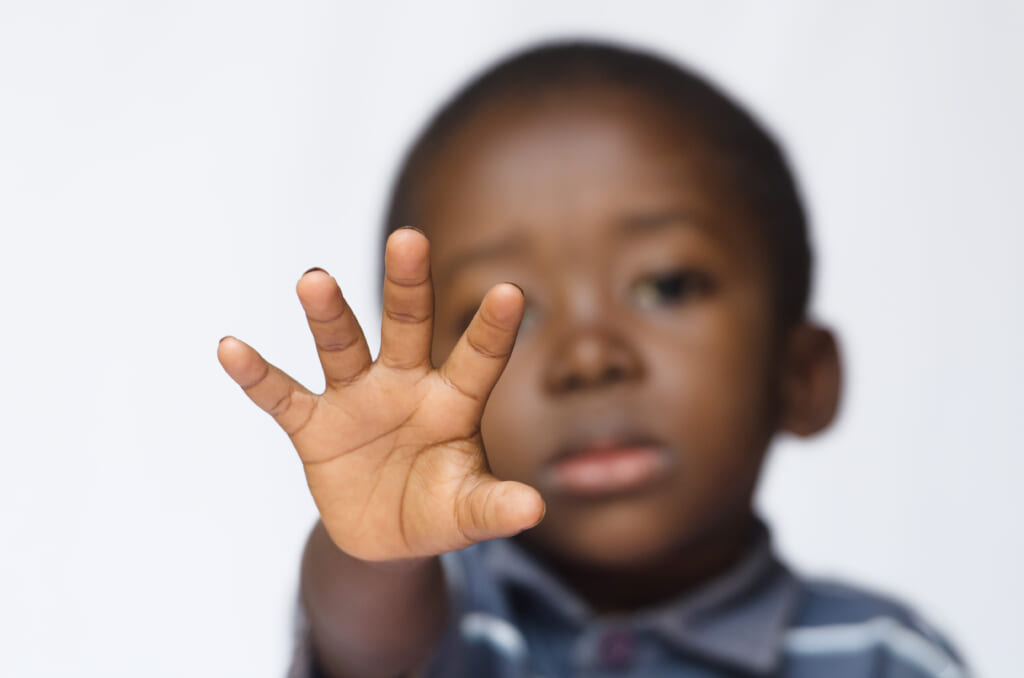
As Black children are learning their ABCs, they are also internalizing how they are seen and considered. That they should be verbally and physically assaulted for being tiny humans. They have little chance of growing up to understand and practice more appropriate forms of emotional expression if the adults in their life aren’t modeling better behaviors. Too many are conditioned to expect negative reactions to their youthful expressions of humanity. They are socialized as problematic before they have any chance to learn appropriate behaviors — and labeled as permanently problematic with no chance of improvement.
We must do better by Black children, or any growing consciousness and chance of progress arising from the last year of our nation’s racial reckoning won’t be worth much. Let’s dry our children’s tears, listen to them, offer hugs and nurturing words of reassurance and wisdom when they’re having a bad day, instead of re-enacting plantation scenes.
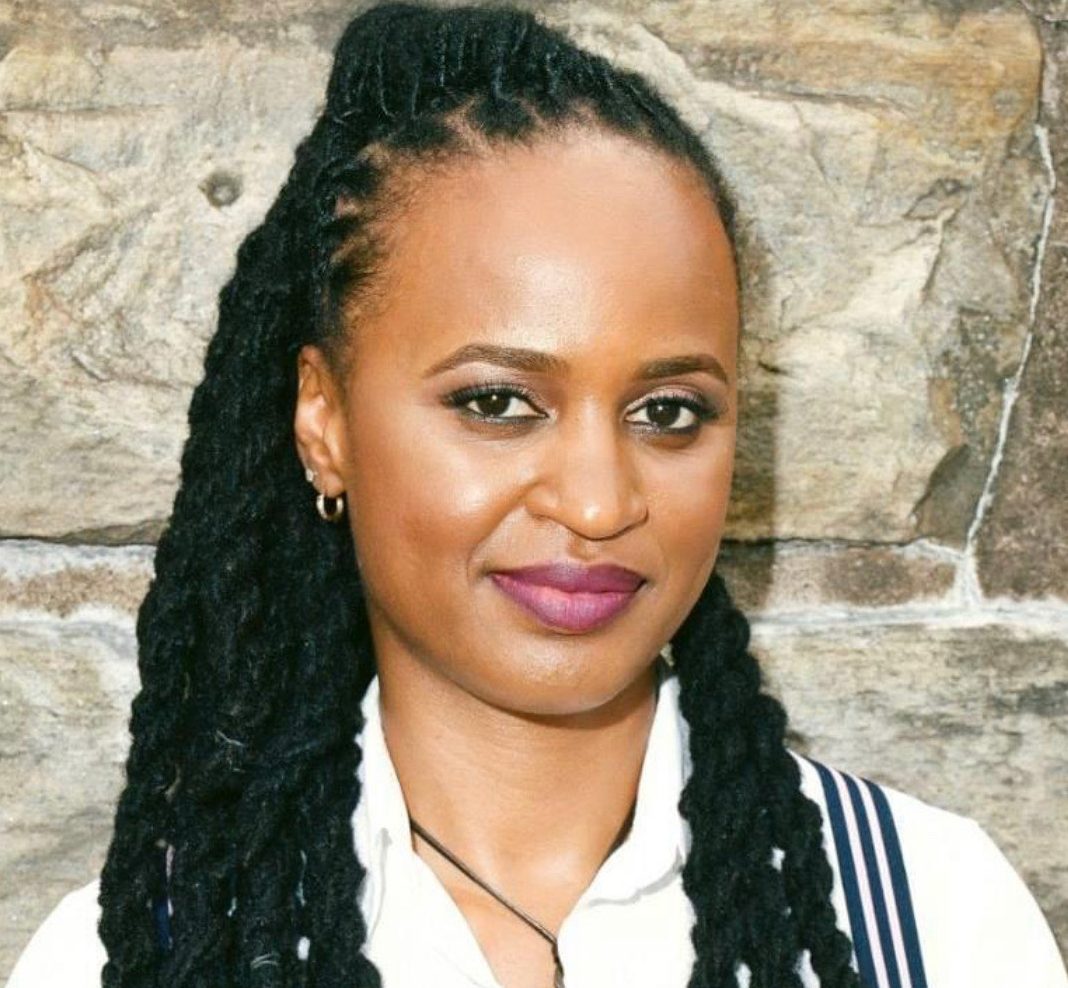
Stacey Patton, PhD is the author of Spare The Kids: Why Whupping Children Won’t Save Black America and the forthcoming book Strung Up: The Lynching of Black Children in Jim Crow America.
Have you subscribed to theGrio’s podcast “Dear Culture”? Download our newest episodes now!
TheGrio is now on Apple TV, Amazon Fire, and Roku. Download theGrio today!
